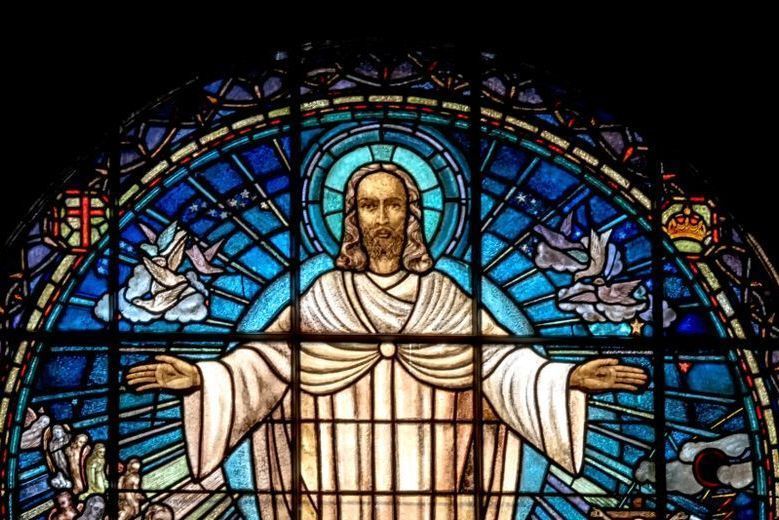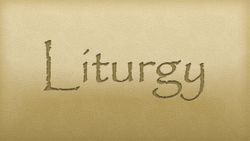Office of Liturgy
"The Church earnestly desires that all the faithful be led to that full, conscious, and active participation in liturgical celebrations... Faith grows when it is well expressed in celebration. Good celebrations foster and nourish faith. Poor celebrations may weaken and destroy it."
Constitution on the Sacred Liturgy, para. 14
Music in Catholic Worship, para. 6
Contact staff for this Ministry
The Office of Liturgy supports the liturgical needs of the diocese by providing ministry guidelines and formation to clergy, parish staff and volunteers. This office offers various workshops and is responsible for implementing liturgical changes. This ministry is overseen by the Episcopal Secretary.
Training for Extraordinary Ministers
Several times throughout the year the Office of Liturgy conducts workshops to train both new and experienced Extraordinary Ministers of Holy Communion. Topics include: salvation history, sacramental theology, history of the Eucharist, origin and development of the Mass, principles of good liturgy, ministry to the sick, and up-to-date information on rubrics for Extraordinary Ministers. New ministers will get a brief “hands--on” practice with unconsecrated altar breads and wine. An RSVP is required to attend the workshops.
To find out more about these trainings, please contact your parish ministry coordinator or this office’s coordinator.
Read the Liturgy Newsletters
Some American Adaptations of the Liturgical Guidelines for Celebrating Mass
Herein are contained certain American Adaptations of the GIRM approved by the U.S. Conference of Bishops & recognized by the Congregation for the Divine Worship & the Discipline of the Sacraments (both in 2002). They are, by no means, the entire collection.
-
Color of Altar Cloths
Out of reverence for the celebration of the memorial of the Lord and the banquet which gives us His Body and Blood, at least one white cloth should be placed on the altar where this memorial is celebrated. The shape, size and decoration of the altar cloth should be in keeping with the design of the altar. When other cloths are used in addition to the altar cloth, then these cloths may be of other colors possessing Christian honorific or festive significance according to longstanding local usage, provided that the uppermost cloth covering the mensa (i.e., the altar cloth itself) is always white in color.
-
Posture of the Faithful
In the U.S., the people should kneel beginning after the singing or recitation of the Sanctus until after the Amen of the Eucharistic Prayer, except when prevented by reasons of health, lack of space, the large number of people present, or some other good reason. The faithful kneel after the Agnus Dei unless the bishop has determined otherwise.
-
Responsorial Psalm
The following may be sung in place of the psalm assigned in the Lectionary for Mass:
- either the proper or seasonal antiphon and Psalm from the Lectionary, as found in the Roman Gradual, or, Simple Gradual or in another musical setting; or
- an antiphon and Psalm from another collection of the psalms and antiphons, including psalms arranged in metrical form, providing that they have been approved by the U.S. Conference or the diocesan bishop.
N.B. Songs or hymns may not be used in place of the Responsorial Psalm.
-
Preparation of the Gifts
Enough bread is to be consecrated so as to communicate to the congregation from hosts consecrated at the Mass in which they have participated.
The use of sacred vessels made of glass or earthenware is not permitted. Sacred vessels made of these materials, while not able to be used in worship, are not to be returned to profane use. (RS#117)
A flagon may be used for the procession of the gifts; however, the pouring of the wine into smaller chalices is to take place at the Preparation of the Gifts, and not at the Breaking of the Bread. (R.S. #106)
-
Sign of Peace
The priest may give the sign of peace to the ministers, but always remains within the sanctuary, so as not to disturb the celebration. For a good reason, on special occasions (for example, in the case of a funeral, a wedding, or when civic leaders are present) the priest may offer the sign of peace to a few of the faithful near the sanctuary.
-
Planning for Holy Communion Distribution
When Holy Communion is to be distributed under both species, careful planning should be undertaken so that:
- enough bread and wine are made ready for the Communion of the faithful at each Mass. As a general rule, Holy Communion is given from hosts consecrated at the same Mass and not from those reserved in the tabernacle. Precious Blood may not be reserved at one Mass for use at another. The Precious Blood may not be reserved, except for giving Communion to someone who is sick;
- a suitable number of ministers of Holy Communion are provided at each Mass. For Communion from the chalice, it is desirable that there be generally two ministers of the Precious Blood for each minister of the Body of Christ, lest the liturgical celebration be unduly prolonged.
-
Distribution of Holy Communion
The norm for reception of Holy Communion in the dioceses of the United States is standing. Communicants should not be denied Holy Communion because they kneel. When receiving Holy Communion, the communicant bows his or her head before the Sacrament as a gesture of reverence and receives the body of the Lord Jesus from the minister. When Holy Communion is received under both kinds, the sign of reverence is also made before receiving the Precious Blood. The consecrated host may be received either on the tongue or in the hand, at the discretion of each communicant. When Holy Communion is received under both kinds, the sign of reverence is also made before receiving the Precious Blood.
-
At the Breaking of the Bread
The celebrant alone, or with the assistance of the deacon, breaks the Eucharistic bread. The deacon or priest places the consecrated bread in several patens or ciboria. If it is not possible to accomplish this distribution in a reasonable time, the celebrant may call upon the assistance of other deacons or concelebrating priests.
If extraordinary ministers of Holy Communion are required by pastoral need, they should not approach the altar before the priest has received Holy Communion.
Neither deacons nor lay ministers may ever receive Holy Communion in the manner of a concelebrating priest. The chalice may never be left on the altar or another place to be picked up by the communicant for self-communication (except for concelebrating clergy). The communicant, including the extraordinary minister, is never allowed to self-communicate, even by means of intinction. The faithful are not permitted to take up the consecrated bread or the sacred chalice themselves, and still less, hand them to one another. The deacon may assist the priest in handing the vessels containing the Body and Blood of the Lord to the extraordinary ministers of Holy Communion.
-
After Holy Communion
After Communion, the consecrated bread that remains is to be reserved in the tabernacle. Care should be taken with any fragments remaining on the corporal or in the sacred vessels. The deacon returns to the altar with the priest and collects and consumes the remaining fragments.
When more of the Precious Blood remains than was necessary for Holy Communion, and if not consumed by the priest celebrant, the deacon immediately and reverently consumes at the altar all of the Blood of Christ which remains; he may be assisted, if needs dictate, by the other deacons and priests. If necessary, a designated minister of Holy Communion may assist in this action at the side table. The reverence due to the Precious Blood of the Lord demands that it be fully consumed after Communion is completed, and never poured into the ground or sacrarium. When transporting the Precious Blood, it is advisable to cover it with the purificator to avoid spillage.
The chalice and other vessels may be taken to the side table, where they are cleansed and arranged in the usual way. Provided the remaining sacred species has been consumed or reserved, "it is permissible to leave the vessels… suitably covered at a side table on a corporal, to be cleansed immediately after Mass following the dismissal of the people." (GIRM #82)
-
Particular Queries
The Invitation to Prayer Before the Prayer Over the Gifts
In response to queries on the matter of at what point does the assembly stand, the USCCB Liturgy issues the following clarification:
- "The people do NOT stand when the priest begins his part. They stand when they respond, "May the Lord accept…," etc. (Consult #29 in the Order of the Mass where it says people "stand and respond.").
In response to when Extraordinary Ministers of Holy Communion should approach the sanctuary (and the altar):
- "There is no easy solution, for it varies with each liturgical space, but we must remember that the point of this regulation is to protect the celebrant’s receiving Holy Communion in front of the assembly. During the priest’s Communion, no one should be moving about the sanctuary or church. Therefore, ministers of Holy Communion should not be waiting so long to come forth that they actually end up running as the celebrant is receiving Communion. They should be in their place in time to perform their function."
- "Another item to avoid is the appearance of the ministers of Communion or anyone else being in the ‘priest’s space.’ Therefore, if possible, ministers of Holy Communion should be at a discreet but helpful distance on the side of the sanctuary rather than right behind the priest, which could give the appearance of being in the ‘priest’s space.’ If the sanctuary were very large, with a sizeable distance behind the priest, the ministers then could gather without appearing to be in the ‘priest’s space.’ The ministers of Communion may begin assembling at a ‘discreet but helpful distance’ during the kiss of peace.
-
The Posture of the People At Mass
(Adapted from the Newsletter of the Bishops’ Committee on the Liturgy, September 2002)
From the beginning of Mass until the First Reading - Stand
From the first reading until the Gospel Acclamation - Sit
From the Gospel Acclamation until the end of the Gospel - Stand
During the homily - Sit
From the profession of Faith until the end of the General Intercessions - Stand
From the Preparation of the Gifts to the completion of "Pray brothers and sisters…." - Sit
From the beginning of the people’s response "May the Lord….." to the beginning of the Holy, Holy - Stand
From the completion of the Holy, Holy until after the Amen of the Eucharistic prayer - Kneel
From the beginning of the Our Father until the completion of the Lamb of God - Stand
From the completion of the Lamb of God until the distribution of Holy Communion - Kneel
When receiving Holy Communion:
(Note: In a recent clarification, the Holy See has indicated that participants may, if they wish, kneel or sit when they return to their places after having received Holy Communion) - Stand
During the sacred silence after the distribution of Holy Communion - Sit or Kneel
From the beginning of the Prayer after Communion until the end of Mass - Stand



